The COVID-19 pandemic has turned fashion shopping upside down. A recent international quantilope study of buyers provides insights into the changed shopping behavior and needs, background, and opportunities in the fashion industry.
Turnover has fallen drastically in that industry. Clothing companies face huge challenges brought about by the lockdown as a response to the global pandemic. COVID-19 and the associated restrictions have greatly changed shopping behavior. A recent quantilope study analyzes what is motivating fashion shoppers at the moment. It provides insights into such items as the implicit motives for purchasing clothing, changes in shopping behavior, the context of the steep drop in sales, and the opportunities for the fashion industry.
The international consumer study uses information from a total of four countries (Germany, France, Italy, and the U.S.). The respondents were clothes shoppers aged 18-69 and were analyzed according to age, sex, and region.
Four strong insights into fashion shoppers' mind
1. There are many reasons for the decline in sales
In all countries involved in the study, clothing sales have fallen drastically since the outbreak of the pandemic. The decline was especially strong in Italy, where 67 percent of respondents said that they bought less clothing than before, because of the pandemic. In Germany, that proportion was only one-third.
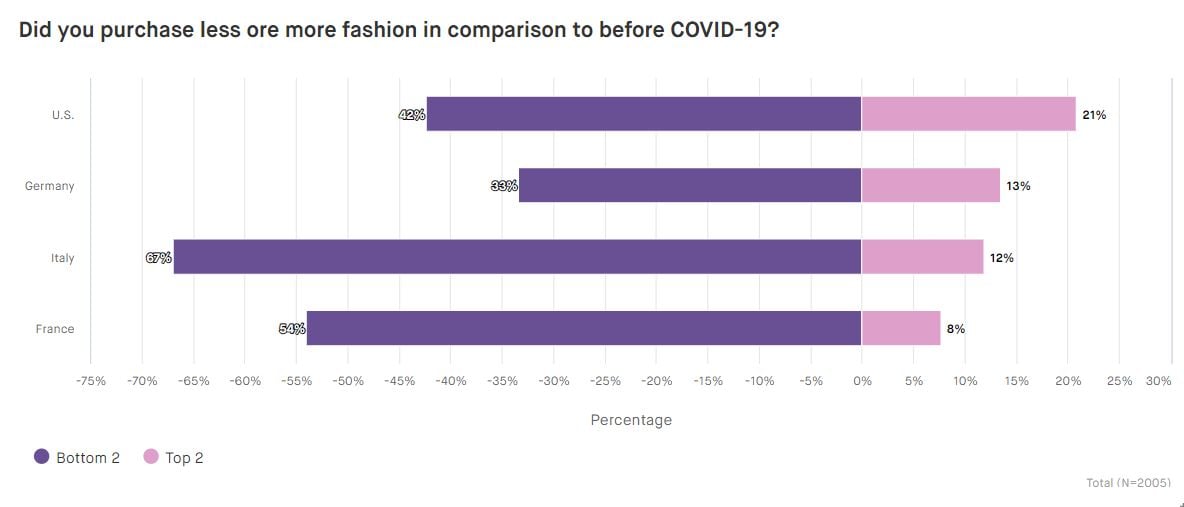
Changes in purchasing behavior due to COVID-19 (country comparison)
There are many reasons for the sales decline, and they tend to be country-specific. While Italian and French respondents reported a general decline in the need for and importance of fashion as a reason for buying less, Germans tended to cite changed circumstances. More than half of German respondents indicated that the mask requirement and the current restrictions on movement are the primary reasons they are buying less clothing.
Lower income is also driving the clothing sales decline, primarily in France, Italy, and the U.S..
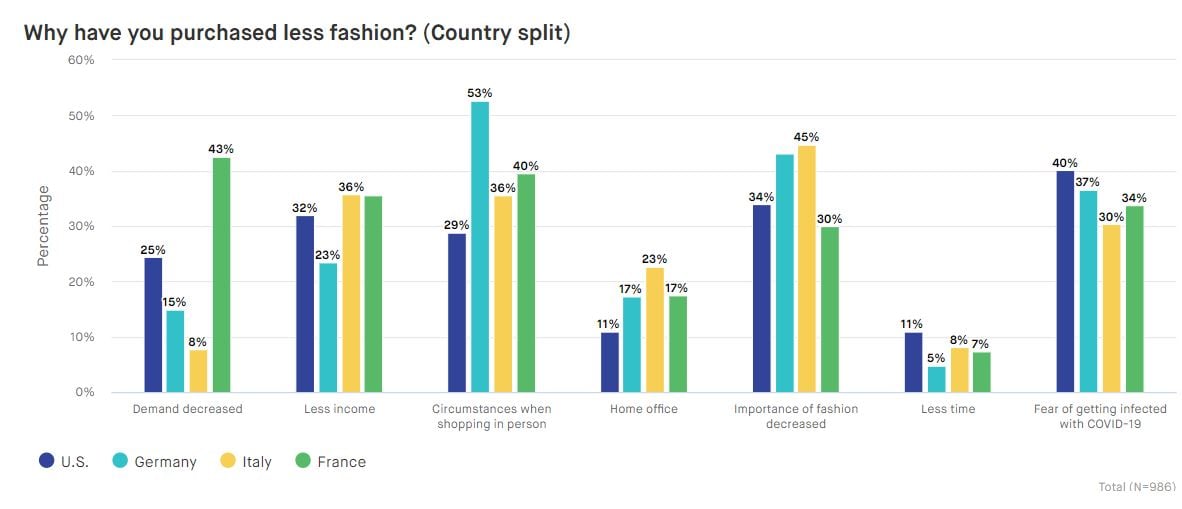
Reasons for reduced fashion sales (country comparison)
2. Shopping is not going online
Almost half (44%) of fashion shoppers have bought less from stationary outlets since the pandemic began. This is not surprising, since many businesses have closed as part of the lockdown. The decline in purchases is not moving shoppers online, though. Only about a quarter of consumers indicated that they are buying more clothing items online now than they did before COVID-19.
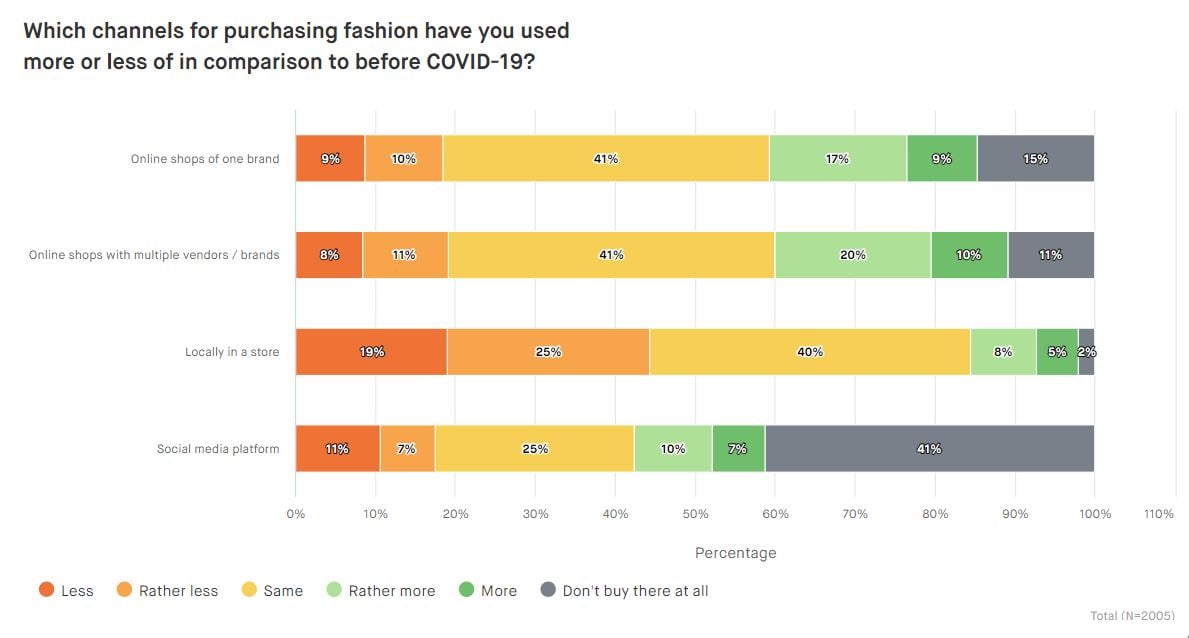
Reasons for reduced fashion sales (country comparison)
3. Stationary outlets have the advantage of fitting, consultation, and inspiration
Stationary outlets provide important services that online shops apparently cannot offer. The opportunity to try clothes on directly before buying them is especially important to shoppers in the European countries the study addressed and motivates them to shop more at stationary outlets. About a third of respondents also say that the consultation and inspiration they receive at stationary outlets is important.
Fashion shoppers also develop relationships with the salespeople in physical shops. About 40% of consumers, especially in the European countries the study covered, expressed a desire to shop more in stationary shops in order to preserve the jobs those shops represent.
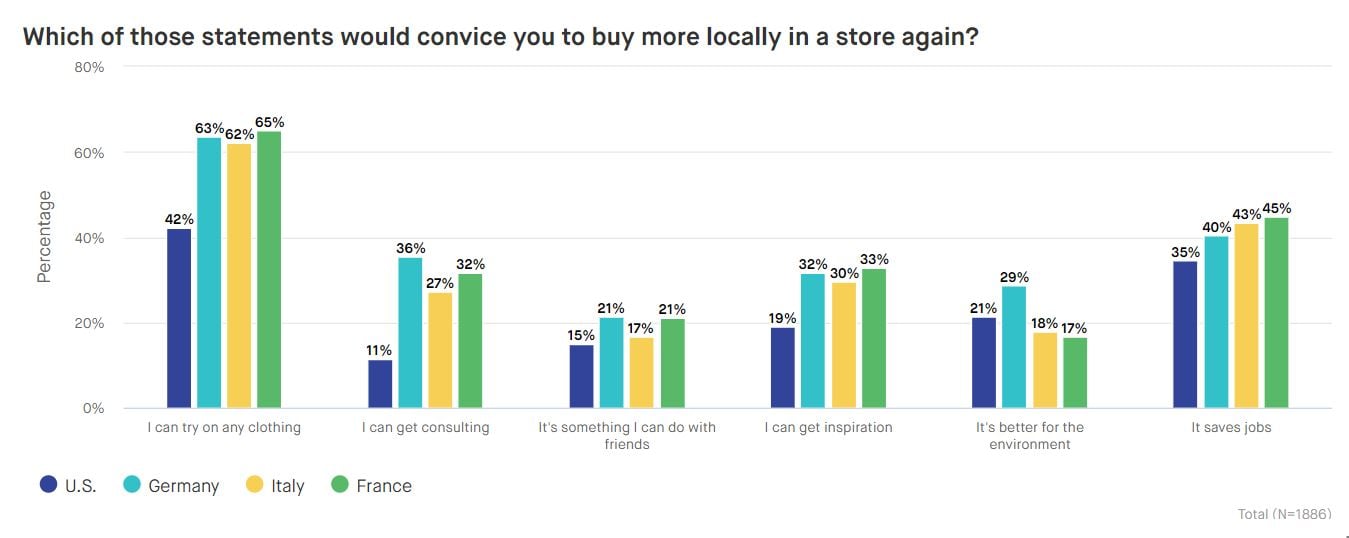
Criteria that motivate shoppers to buy from stationary outlets (country comparison)
4. The subconscious reasons for buying fashion: inspiration, independence, and joy
Fashion shopping is not primarily a reasoning activity, and it goes far beyond acquiring an article of clothing. Buying clothing inspires shoppers and makes them feel independent. It is fun and exciting. Many people associate fashion with freedom of expression and pride. People don’t choose an article of clothing because it makes sense or is a safe bet. Nor is the primary question one of status. It is important to address the implicit motives, since they are what influence the purchase decision at a fundamental level.
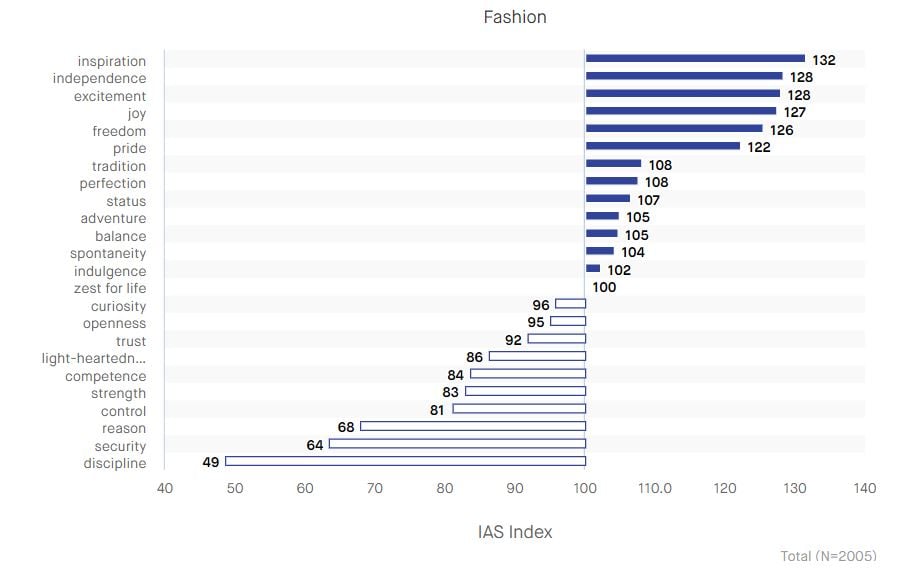
Fashion Motivational Map (subconscious, implicit associations)
Recommendations for commerce
If you want to win over fashion shoppers, you have to address the subconscious associations in the fashion context: inspiration, independence, and joy.
Consumers’ subconscious associations and motives are extremely important to fashion brands. They provide decisive insights into the subconscious motives that drive behavior. Stationary outlets that are currently closed serve relevant needs that online commerce has not yet addressed and that remain unfulfilled for consumers. This implies new potential and indicates that action needs to be taken to reach consumers.
Get a summary of the entire study now.
A tablet or desktop is recommended for optimum display.
All trademarks belong to their respective owners.
About the study
The study was conducted using quantilope's Agile Insights software. High-quality, automated research methods from quantitative market research were used, e.g. implicit association tests (Single Association Tests) and preference rankings (Maximum Difference Scaling). The study was conducted as a multi-country study in one single project.
Do you have any more questions?
Our insights experts would be very happy to talk with you.
Contact us: Contact





.png)